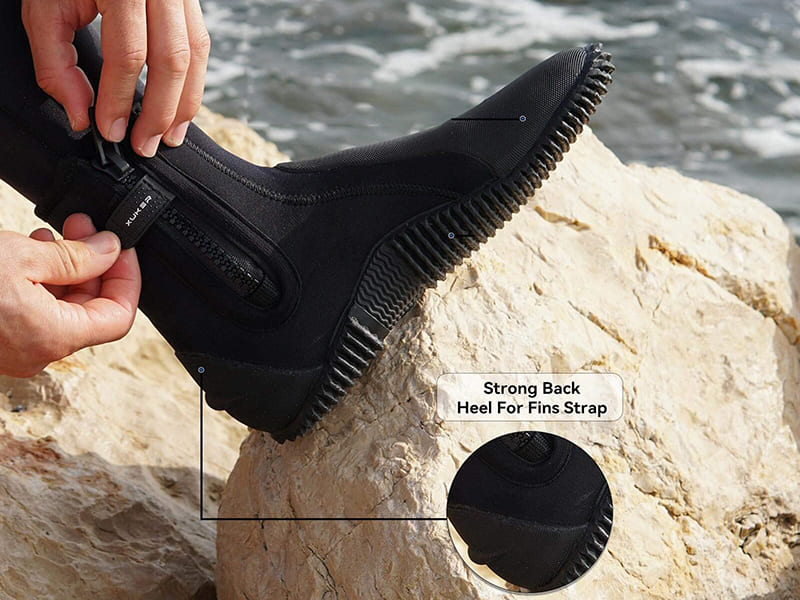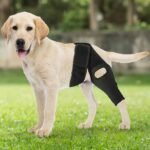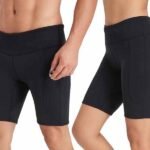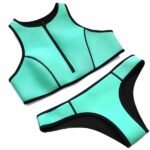Neoprene boots are widely used for outdoor activities, especially in cold and wet conditions. Whether you’re fishing, hiking, or engaging in water sports, keeping your feet warm is essential for comfort and safety. But how warm are neoprene boots? Let’s explore their design, features, and effectiveness in keeping your feet cozy in various environments.
Neoprene boots are designed to provide warmth and insulation by trapping body heat and creating a barrier against cold water and air. They are highly effective in maintaining warmth during outdoor activities, even in cold and damp conditions. Learn more about neoprene’s insulating properties.
This article answers the most common questions about neoprene boots and their ability to keep your feet warm.
What Are Neoprene Boots Made Of?
Neoprene boots are crafted from neoprene, a synthetic rubber material known for its insulation and flexibility. Neoprene contains tiny gas-filled cells that trap heat, making it an ideal material for maintaining warmth in wet and cold conditions.
Neoprene boots are made of layered neoprene, often combined with rubber soles and reinforced seams. These features make them durable, waterproof, and effective at providing thermal insulation.
Key Features of Neoprene Material
- Closed-Cell Structure: Traps heat and prevents water penetration.
- Flexibility: Allows ease of movement without compromising warmth.
- Waterproofing: Keeps feet dry in wet environments.
| Feature | Benefit |
|---|---|
| Closed-Cell Design | Insulates by trapping heat |
| Flexibility | Ensures comfort during activities |
| Waterproofing | Protects against water and moisture |
This combination of properties makes neoprene boots a reliable choice for cold-weather and aquatic activities.
Are Neoprene Boots Warm Enough for Winter?
Neoprene boots are specifically designed to provide insulation, but are they sufficient for freezing winter conditions?
Yes, neoprene boots are warm enough for winter when properly insulated and sized. Their ability to retain body heat and block cold air makes them suitable for moderate to harsh winter conditions. However, extreme cold may require additional thermal layers or socks.
Tips for Winter Use
- Layering: Wear thermal socks for added warmth.
- Thicker Neoprene: Opt for boots with 5mm to 7mm thickness for colder environments.
- Proper Fit: Ensure a snug fit to minimize heat loss.
Neoprene boots are versatile and perform well across a range of winter temperatures, making them a popular choice for outdoor enthusiasts.
How Warm is 6mm Neoprene Boots?
The thickness of neoprene significantly impacts its insulating properties. So how effective are 6mm neoprene boots in maintaining warmth?
6mm neoprene boots provide excellent insulation, suitable for cold water and winter activities. They balance warmth and flexibility, making them ideal for extended use in temperatures near freezing. Refer to choosing the right thickness for neoprene boots for more details.
Applications of 6mm Neoprene Boots
- Water Sports: Keeps feet warm during cold-water activities like kayaking or fishing.
- Snowy Environments: Provides insulation against snow and slush.
- Cold Climates: Ideal for temperatures ranging from 0°C to -10°C (32°F to 14°F).
| Thickness | Recommended Temperature Range |
|---|---|
| 3mm | Mild to moderate cold |
| 5mm | Moderate cold to near-freezing |
| 6mm+ | Freezing and extreme cold |
6mm neoprene boots are an excellent option for both recreational and professional use in colder climates.
How Do Neoprene Boots Keep Your Feet Warm?
The insulating properties of neoprene are the main reason these boots are so effective in keeping feet warm. Neoprene works by trapping body heat and preventing cold air and water from reaching the skin.
Neoprene boots keep your feet warm by using their closed-cell structure to trap heat while providing a barrier against external elements. The material adapts to the user’s body temperature, ensuring consistent warmth even in wet conditions.
Mechanisms of Warmth
- Heat Retention: The gas-filled cells in neoprene trap heat, creating an insulating layer.
- Water Resistance: Prevents cold water from penetrating the boot.
- Snug Fit: Reduces air circulation inside the boot, minimizing heat loss.
These features make neoprene boots a must-have for anyone needing reliable warmth in cold and wet environments.
Are Neoprene Boots Worth It?
With so many boot options available, is it worth investing in neoprene boots? Their durability, insulation, and versatility make them stand out.
Yes, neoprene boots are worth the investment for those who need reliable warmth and waterproofing. They are highly durable and adaptable, making them ideal for outdoor activities in challenging conditions.
Benefits of Neoprene Boots
- Durability: Resistant to wear and tear, ensuring long-term use.
- Multi-Purpose: Suitable for fishing, hiking, and water sports.
- Comfort: Provides a snug and supportive fit for extended wear.
Neoprene boots are a cost-effective solution for individuals seeking comfort and performance in cold and wet conditions.
What Factors Affect the Warmth of Neoprene Boots?
The effectiveness of neoprene boots in providing warmth depends on several factors, including material thickness, fit, and additional features.
Factors like neoprene thickness, boot design, and external weather conditions influence the warmth of neoprene boots. Proper maintenance and usage also play a significant role in maintaining their insulating properties.
Key Factors
- Material Thickness: Thicker neoprene offers better insulation but may reduce flexibility.
- Fit: A snug fit prevents cold air or water from entering the boot.
- Additional Features: Elements like fleece lining or reinforced seams enhance warmth.
| Factor | Impact on Warmth |
|---|---|
| Thickness | Determines insulation level |
| Fit | Reduces heat loss |
| Lining | Adds extra insulation |
Understanding these factors helps users select neoprene boots that best meet their needs and preferences.
Conclusion
Neoprene boots are a reliable choice for staying warm in cold and wet conditions. Their unique material properties and thoughtful design make them effective in trapping heat and providing insulation. Whether you’re tackling winter adventures or engaging in water sports, neoprene boots deliver comfort, durability, and warmth.
At Szoneier, we specialize in manufacturing high-quality neoprene boots tailored to your needs. Our products combine performance with style, ensuring satisfaction for brands, wholesalers, and retailers worldwide. Contact us today to explore our custom neoprene boot solutions and discover how we can help elevate your product offerings.











